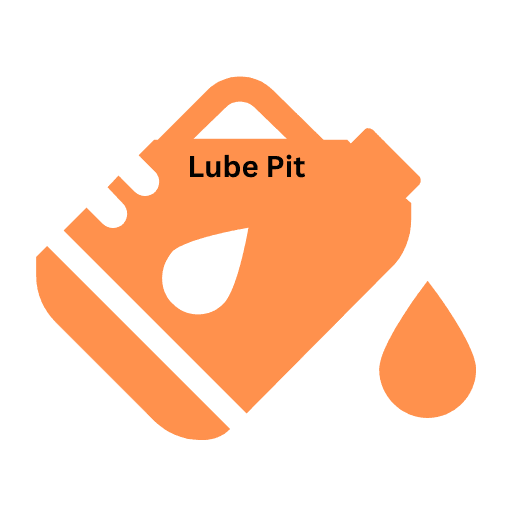Oil changes and car fluids are the foundation of vehicle maintenance because they directly affect engine performance, safety, and lifespan. Every system — from the engine to the brakes — relies on clean, fresh fluids to function properly. Neglecting fluid service causes wear, overheating, or system failure.
This guide explains what each fluid does, how often to replace it, and the costs involved.
Why Do Oil Changes Matter?
Oil changes matter because motor oil lubricates moving parts, reduces friction, and prevents overheating. Without routine changes, oil degrades into sludge that damages engine components.
Oil protects key components such as:
- Pistons
- Crankshaft
- Camshaft
Replacing oil on schedule extends engine life, maintains fuel efficiency, and keeps warranty coverage valid.
How Often Should You Change Oil?
Most vehicles need oil changes every 7,500–10,000 miles with synthetic oil or 3,000–5,000 miles with conventional oil. Severe driving conditions shorten these intervals.
| Oil Type | Typical Interval | Severe Conditions Interval |
| Conventional | 3,000–5,000 miles | 2,000–3,500 miles |
| Synthetic | 7,500–10,000 miles | 5,000–7,500 miles |
Following manufacturer recommendations prevents breakdowns and keeps engines operating efficiently.
Conventional Oil vs. Synthetic Oil
Conventional oil is petroleum-based and lower cost, while synthetic oil is chemically engineered for longer protection and extreme conditions.
| Oil Type | Cost per Change | Lifespan (miles) | Benefits | Best For |
| Conventional | $30–$50 | 3,000–5,000 | Affordable, basic lubrication | Older vehicles, budget drivers |
| Synthetic | $60–$120 | 7,500–10,000 | Heat resistance, cold flow, extended lifespan | Modern engines, high-performance cars |
Brands such as Mobil 1, Castrol Edge, and Valvoline Advanced Synthetic lead the market.
Signs You Need an Oil Change
The most common signs you need an oil change include dirty oil, engine noise, or dashboard warnings.
Indicators include:
- Oil that appears black or gritty on the dipstick
- Knocking or ticking sounds from the engine
- Dashboard oil pressure or check engine lights
- Excess exhaust smoke or burning oil smell
- Reduced acceleration and fuel economy
Ignoring these signals risks severe engine wear or overheating.
Cost of an Oil Change
An oil change costs $30–$250 depending on oil type, vehicle, and service provider.
| Service Type | Cost Range | Notes |
| DIY Oil Change | $30–$50 | Requires tools, safe oil disposal |
| Quick-Lube Shops | $50–$120 | Examples: Jiffy Lube, Walmart Auto Care |
| Dealership Service | $100–$250 | Uses OEM parts, certified technicians |
Luxury brands such as BMW, Mercedes-Benz, and Audi require manufacturer-specific oils, which increase costs.
DIY Oil Change vs. Professional Service
DIY oil changes save money, but professional service offers convenience and safety.
DIY Oil Change:
- Pros: Lower cost, flexible timing
- Cons: Requires tools (drain pan, jack stands, filter wrench), risk of errors
Professional Service:
- Pros: Correct torque, safe disposal, multi-point inspections included
- Cons: Higher cost, wait times
DIY is cost-effective for skilled drivers, while professional service prevents mistakes for beginners.
Choosing the Right Oil for Your Vehicle
Choosing the right oil requires matching viscosity, manufacturer standards, and climate.
- Most modern vehicles: SAE 5W-30 or 0W-20 synthetic
- High-performance cars: Standards such as BMW Longlife-01 or VW 502 00
- Cold climates: Lower viscosity oils for faster lubrication
- Hot climates: Higher viscosity for stability
Always check the owner’s manual or manufacturer guidelines to maintain warranty compliance.
What Happens If You Don’t Change Oil?
Failing to change oil leads to sludge buildup, overheating, and engine failure.
Consequences include:
- Clogged oil passages
- Starved bearings and pistons
- Seized engine requiring replacement ($4,000+)
- Voided warranties and reduced resale value
Environmental Impact of Oil Changes
Improper oil disposal contaminates soil and water.
- EPA warns: One gallon of used oil can pollute one million gallons of water
- Professional centers recycle used oil into new fuel
- DIY mechanics must recycle oil at certified collection sites
Recycling protects ecosystems and meets environmental regulations.
Other Essential Car Fluids Beyond Engine Oil
Vehicles rely on several fluids besides engine oil, including transmission fluid, brake fluid, coolant, power steering fluid, and differential fluid. Each has unique service intervals.
| Fluid Type | Function | Change Interval | Signs of Problems |
| Transmission Fluid | Lubricates gears, enables shifts | 30,000–60,000 mi | Slipping, delayed shifts |
| Brake Fluid | Transfers hydraulic force | 2–3 years | Spongy pedal, weak brakes |
| Coolant | Regulates temperature | 50,000 mi / 5 yr | Overheating, leaks |
| Power Steering | Aids steering hydraulics | 50,000–100,000 mi | Whining noise, stiff wheel |
| Differential Fluid | Lubricates gear sets | 30,000–60,000 mi | Whining, overheating |
Maintaining all fluids prevents costly repairs and ensures safety.
Signs Car Fluids Need Replacement
Common signs car fluids need replacement include leaks, dashboard lights, and poor performance.
- Transmission: slipping gears, overheating
- Brake: soft or spongy pedal
- Coolant: overheating or rusty color
- Power Steering: stiff wheel or whining noise
- Differential: grinding or whining under load
How to Check and Top Up Car Fluids
Checking fluids involves using dipsticks, reservoirs, or fill caps in the engine bay.
- Engine oil: Dipstick method
- Transmission fluid: Dipstick or sealed system inspection
- Coolant: Check translucent reservoir markings
- Brake and power steering: Inspect fluid level in reservoir
Always refill with manufacturer-approved fluids to prevent system damage.
Conclusion
Oil and fluid maintenance are the backbone of vehicle reliability, safety, and long-term value. Drivers who follow manufacturer intervals, use correct fluid types, and act on warning signs save thousands in repairs and ensure safe operation for years.

